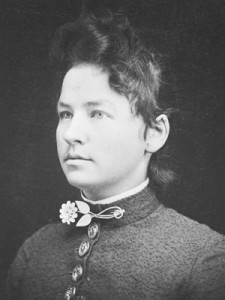An intense, horrible blizzard hit with violent force over the plains states and territories of the United States on January 12, 1888, at the same time that many children were leaving school for the day. Two hundred and thirty-five people died, and 213 of them were children, which is why the storm is referred to as the Children's Blizzard, Schoolhouse Blizzard, or Schoolchildren's Blizzard (not to be confused with the "Great Blizzard of 1888" which struck later).
 |
| Frank Leslie's Weekly, January 28, 1888 - Scenes and Incidents from the Recent Terrible Blizzard in Dakota. Public Domain. |
Earlier in January, the affected area had received snow, followed by freezing temperatures. Oddly, the weather turned mild for many on the morning of January 12, with a southern wind melting ice. Children and adults alike left their coats at home when they went about their days, anticipating a warmer day.
The arrival of the storm was sudden and shocking. Survivors described it as a wall of dark cloud descending from the northeast with a roar like a hurricane or train. The wind's furious blasts suffocated animals and whipped up the existing snow on the ground, crushing it and turning it into a crystallized powder, fine as flour, that seeped into every crevice it could find, including keyholes. The powdery snow stung skin, and also reduced visibility to a few steps. In some places, the temperature dropped a hundred degrees Fahrenheit in twenty-four hours.
The storm hit as many children were leaving school for the day, and many who had already been dismissed were caught in it. For those who were still in session when the storm hit, the majority were kept inside by teachers, but not all. A few well-intentioned teachers sent their students home where they thought they'd be safer, and others found they had no choice but to leave the schoolhouse.
One such teacher was 19-year-old Minnie Freeman of Ord, Nebraska, who was forced to abandon the schoolhouse with her students when the roof blew off their sod schoolhouse. Legend says she tied her students together with rope, although one of the students dispute this. Regardless, they made it safely to her home a mile away.
 |
| Minnie Mae Freeman Penney (1868-1943). From Find a Grave. |
Lois Royce was from Plainview, Nebraska was not as fortunate. She and three students (two 9-year-old boys and a 6-year-old girl) stayed at the schoolhouse but had used up their fuel by three o'clock. Since Lois lived less than a hundred yards from the school, they decided to go there. Unfortunately, they couldn't see where they were going and they became lost. Only Lois survived, and her frostbitten feet had to be amputated.
One farmer, William Kampen of Nebraska, stumbled to a stranger's barn and kept warm by lying with the pigs. Meanwhile, his wife gave birth alone and stayed in bed with her baby to keep warm, since they had no more fuel.
The stories of loss are harrowing and tragic, but there are also stories of heroic compassion and survival. The parents of Great Plains, South Dakota, tied ropes to the house closest to the school and used it as a guide to rescue the children and their teacher. Daniel Freeman of Homestead, Nebraska, no relation to Minnie, offered food and a violin to feed and entertain the children stuck at the adjacent school.
Other folks opened their homes to strangers, used their drays to transport children, and searched for the lost and missing.
Less than a foot of snow fell in some places, and other areas were buried, but it was the existing snow on the ground paired with the gale-force winds and bitter temperatures that caused terrible damage to life, livestock, and property.
 |
| Photographer and specific location unknown, 1888. Note the snow is not terribly deep, although in other places, the drifts were very high. Public Domain. |
The tragedy gripped America's attention, and some of the teachers, like Minnie Freeman, were lauded as true heroines.
***
Coming February 2020




Wow! That's just freaky! Thanks for telling us about it.
ReplyDeleteIt was a truly horrible thing, wasn't it? The survivors' stories are heartbreaking.
DeleteSo glad you could come by, Connie. Thank you!
WOW! I have shivers while reading this information.
ReplyDeleteYes, it's so sad, isn't it, Melissa! Makes me so grateful for our modern early-warning systems and technology.
DeleteHave a *warm* day!
I learned about that awful winter when I was researching my North Dakota series. Nearly 80% of ranchers' cattle was killed by the vicious weather they had that winter. So sad about so many children dying.
ReplyDeleteYou're asolutely right, Vickie--the loss of livestock was staggering! Many people lost their livelihoods. Breaks my heart to consider the devastation caused by this blizzard.
DeleteThank you so much for dropping by.
You know here in NY it was 1966 that was bad, my daughter was just saying its Jan and we have no snow... she pointed out this while we were driving thru Montezuma Wildlife Refuge flat as flat can be and all I could imagine was the winds just blowing through there... this is the first time I have read about this in the plains. Thank you for sharing with us and it is a very sad thing so many children died.
ReplyDeleteBlessings
Linda Marie Finn
Faithful Acres Books
I so want to read this book this year!
DeleteCongratulations!
Linda
I've read about this blizzard! I think it was called The Children's Blizzard. I had read a small caption about it and went looking for a book. The whole situation was a terrible thing. MY heart went to those affected by it. Such a sad thing to have happened.
ReplyDelete